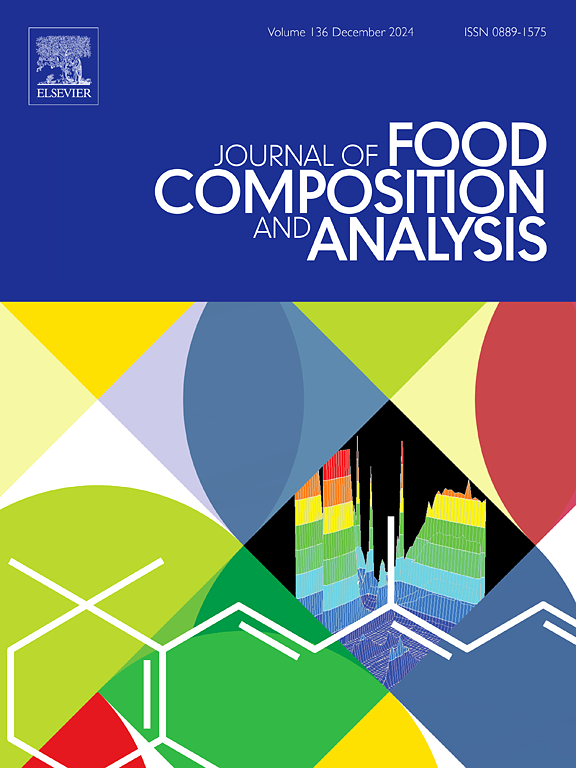Morpho-nutritional diversity for biofortification traits to enhance fruit quality in pomegranate (Punica granatum L.)
IF 4
2区 农林科学
Q2 CHEMISTRY, APPLIED
引用次数: 0
Abstract
In the present study, a comprehensive approach to analyze twenty-five pomegranate accessions (indigenous and introduced exotic types) for both morphological and nutritional traits was used, aiming at biofortification to tackle agricultural and nutritional challenges. Significant variability was reported among the evaluated accessions for acidity (0.32–2.69), total soluble solids (9.8–17.2 °Brix), ascorbic acid (12.5–19.2 mg/100 mL), monomeric anthocyanin (0.7–46.9 mg/100 mL), reducing sugars (1.1–32.3 g/100 mL), total soluble sugar (3.6–22.9 g/100 mL), total phenols (697–3854 mg/L), iron (25–193 mg/kg), zinc (10–36 mg/kg), calcium (12–25 mg/100 g), and potassium (564–1093 mg/100 g). Promising multi-trait donors, i.e. Solapur Anardana, Yercaud HRS, IC-24685 and Mukteshwar for improving acidity, ascorbic acid, total sugar, reducing sugars, total phenols, total soluble solids, Fe, Zn, Cu, Ca, Mg, K and P were identified on the basis of heat map clustering. SSR markers further identified genetically distinct parental combinations with high (Solapur Anardana, Borekaunk and Utkal) and low (Bhagawa, Super Bhagawa and Solapur Lal) acidity types for targeted breeding. This research is significant for trait-specific breeding aimed at developing biofortified pomegranate varieties with enhanced nutritional content. Pomegranate biofortification will lead to agricultural resilience and better market opportunities for both fresh consumption and processed products. The findings emphasize the need for further evaluation of additional germplasm to refine breeding strategies for developing nutrient-rich pomegranates.
求助全文
约1分钟内获得全文
求助全文
来源期刊

Journal of Food Composition and Analysis
工程技术-食品科技
CiteScore
6.20
自引率
11.60%
发文量
601
审稿时长
53 days
期刊介绍:
The Journal of Food Composition and Analysis publishes manuscripts on scientific aspects of data on the chemical composition of human foods, with particular emphasis on actual data on composition of foods; analytical methods; studies on the manipulation, storage, distribution and use of food composition data; and studies on the statistics, use and distribution of such data and data systems. The Journal''s basis is nutrient composition, with increasing emphasis on bioactive non-nutrient and anti-nutrient components. Papers must provide sufficient description of the food samples, analytical methods, quality control procedures and statistical treatments of the data to permit the end users of the food composition data to evaluate the appropriateness of such data in their projects.
The Journal does not publish papers on: microbiological compounds; sensory quality; aromatics/volatiles in food and wine; essential oils; organoleptic characteristics of food; physical properties; or clinical papers and pharmacology-related papers.
 求助内容:
求助内容: 应助结果提醒方式:
应助结果提醒方式:


